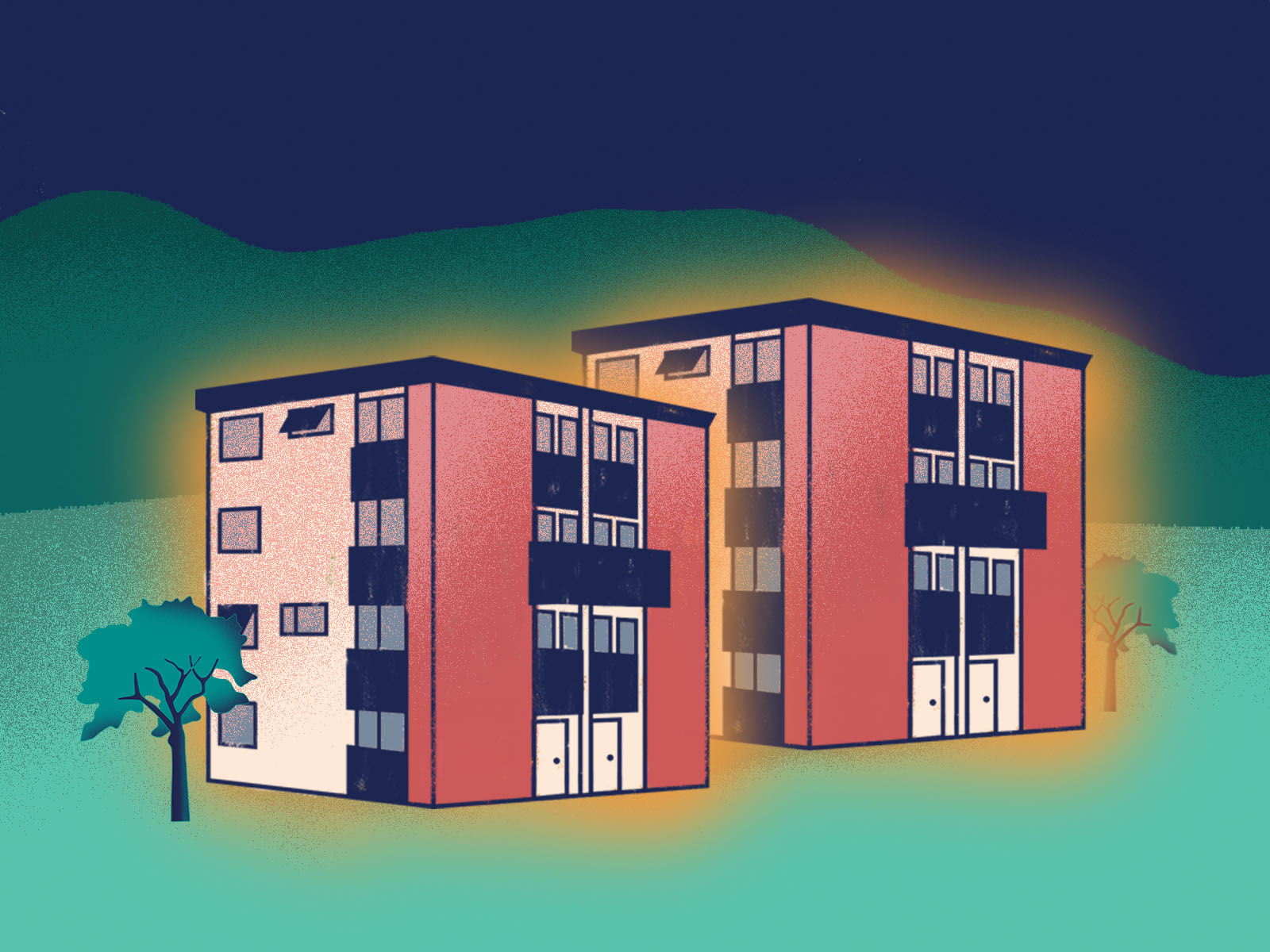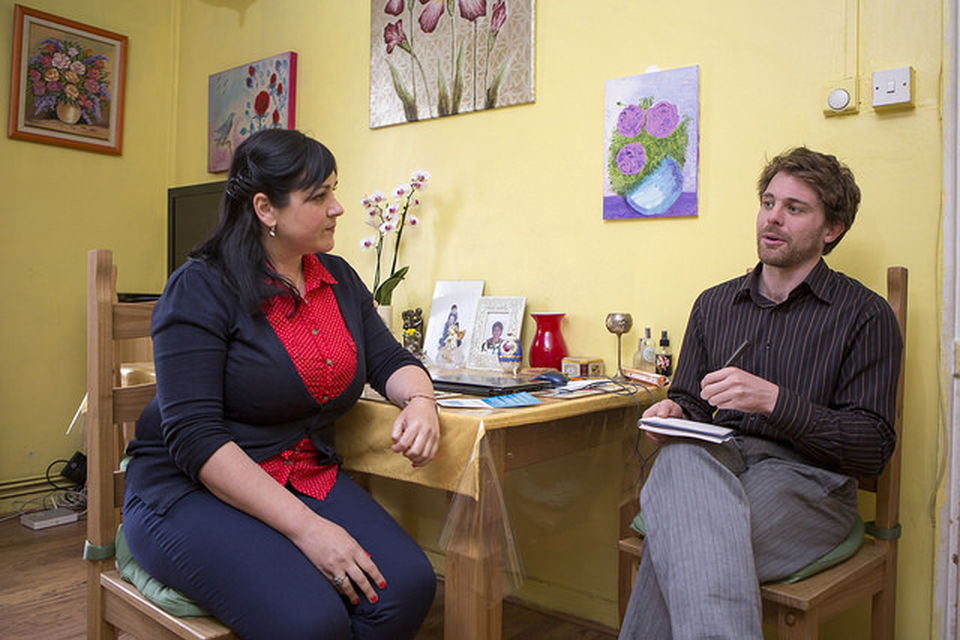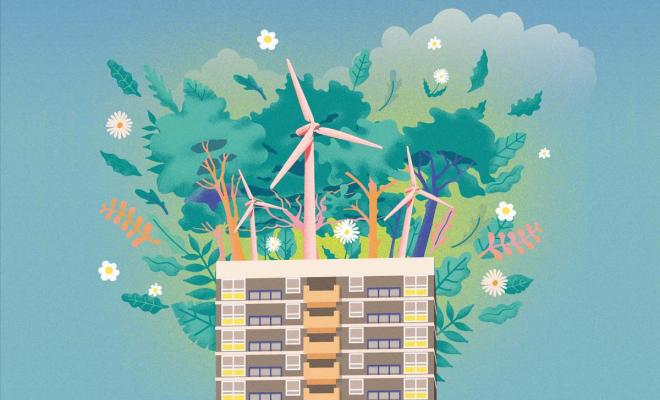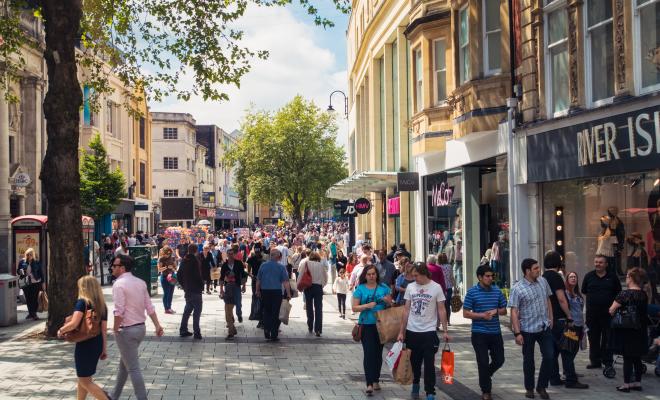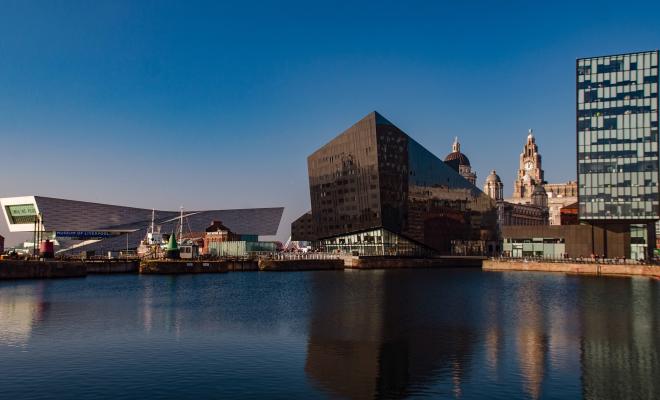20 Sep 2024
How are Actions 11 and 14 tackling the climate crisis?
Islington Council is tackling both carbon emissions and fuel poverty by providing advice and energy efficiency measures to its residents. It’s also extended the service to other Londoners.
Fuel-poor homes are those that spend a disproportionate amount of their income on heating. Fuel poverty is primarily caused by 3 factors: low income, high fuel prices and high energy consumption (which is in turn caused by poor energy efficiency of buildings). At the same time, between 14-22% of the UK’s carbon emissions come from energy use in domestic homes. By taking action to improve the energy efficiency of homes, local authorities can simultaneously fight fuel poverty and cut carbon emissions.
There’s no “typical” fuel-poor home. This diversity, and the intersection of fuel poverty with other socio-economic issues, can make it a complex issue to tackle effectively. The Seasonal Health Intervention Network (also known as SHINE), set up by and based at Islington Council, demonstrates a pioneering, joined-up approach, recognising that people affected by fuel poverty often face other financial, health or social problems.
For over a decade, SHINE has brought together more than 86 organisations including the NHS, GP surgeries, the London Fire Brigade, housing associations, charities such as Age UK, Trussell Trust and Shelter, private sector energy companies, water suppliers and distribution network operators. SHINE integrates these previously disparate services into a single point of contact for vulnerable individuals, who can access multiple warmth and seasonal health interventions, including energy efficiency measures, with ease.
SHINE first launched as a pilot in December 2010 and was mainstreamed by Islington Council in April 2011. After winning an Ashden Award in 2015, SHINE expanded its provision to all Londoners. Fuel poverty support across the capital had been historically uneven. Now, SHINE can offer assistance without the restriction of geographic or local authority boundaries. With the number of people in fuel poverty rising rapidly due to the energy crisis, such services are more important than ever and urgently need scaling up.
SHINE’s services
Any household with an annual income below £16,190 is eligible for referral, although SHINE doesn’t enforce a strict income eligibility cut-off. Nor do all beneficiaries have to be on a low income – other target groups also served by SHINE include residents living with a disability or long-term health condition, children under 15 and adults over 60.
Services on offer by SHINE include:
- Energy Doctors – qualified energy advisers who conduct home visits and install energy efficiency measures ranging from draught proofing to LED lightbulbs to energy use monitors.
- Telephone helpline – offering advice on energy and water bills.
- Debt support – one-on-one meetings to assist with payment plans and trust fund applications for debt relief.
- Onward referrals – to grant funding, fire safety checks, air pollution alert systems, befriending services and social activities, and London Taxicard (a subsidised taxi service for those with visual or mobility impairments).
Referrals are made in different directions across the network, with staff across the various partners trained to spot the signs of fuel poverty. Working with many cross-sector partners enables SHINE to significantly increase its reach and identify struggling homes that might otherwise be missed.
The ongoing energy crisis has seen an increase in people requiring SHINE’s assistance, particularly the number of complex debt cases. To prepare ahead of peak winter demand, SHINE employees have been delivering mini seminars to inform colleagues within Islington Council about the 100 different interventions the service can offer. This is to ensure internal cross-referrals are operating smoothly.
Support is also being targeted at the homes hardest to heat ahead of the 2022/23 winter season. Beyond ensuring that people are receiving their basic entitlements, SHINE is focusing efforts on securing ECO4 retrofit grants for its clients. Retrofit grants such as ECO, the Green Homes Grant (Local Authority Delivery) and the Home Upgrade Grant are government fuel poverty schemes to fund or partially fund the cost of home energy efficiency improvements. SHINE recognises that in the midst of the current crisis, longer-term solutions that go beyond the more minor energy efficiency measures on offer by its Energy Doctors are critical.
“The coming autumn and winter are going to be difficult for everyone, but especially for our clients. I have always taken the view that tackling fuel poverty is no different from tackling climate change. If you improve the fabric of a building, you improve the quality of someone’s life, and that has a positive impact on carbon emissions too.”
Terence Jeffery, Energy Doctor at SHINE.
What impact has the project had?
Since its expansion in 2016, SHINE has helped 25,000 London households to date. Its services reach over 5,000 Londoners at risk of fuel poverty every year.
Financial impact – To date, SHINE has been saving residents an average of £213 a year via discounts, debt support and energy saving measures. And it’s not just residents who save – for every £1 invested in warm homes, the NHS benefits from £0.42 saved in direct health costs.
Between April 2021 and March 2022 SHINE supported 6,621 households, with cumulative savings of over £438,000. This was achieved through the following interventions:
- Securing savings via the Warm Home Discount Scheme, a one-off government payment for low-income, fuel-poor homes or pensioners (£265,020).
- 574 retrofit grant referrals made, with estimated cumulative lifetime savings of £6,234,255.
- 219 debt cases supported with £27,915 written off.
- 1,595 home visits to install energy efficiency measures (£145,281).
Helping residents to understand and access the grants they’re entitled to is important in itself, because many people are unaware of government grants.
Carbon impact – the average carbon emissions savings from SHINE’s work are difficult to estimate but are thought to be in the range of 1,500-1,700 tonnes of carbon dioxide (CO2) annually.
Health and social impact – Residents have positive feedback about the help they get from SHINE. Maria is an elderly Islington resident who suffers from chronic obstructive pulmonary disease (COPD), asthma, bronchitis and vertigo – all conditions exacerbated by excess cold. She tried seeking help independently for warming her poorly heated flat, but with no results. Eventually, the hospital contacted SHINE, which then sent Terry Maslin, an Energy Doctor, to assess the flat and install energy efficiency measures such as window draught proofing and radiator reflectors. These immediately improved Maria’s comfort and living environment.
Many SHINE beneficiaries themselves become unofficial community advocates for the service, informing and persuading neighbours, family and friends to reach out. 90% of SHINE clients surveyed say that they’re “highly satisfied” with the help they receive. Word of mouth has been a notably effective way to publicise the service and can be a form of empowerment for those who’ve benefited and wish to support others in their community.
SHINE’s approach has been written into the National Institute for Health and Care Excellence’s guidelines on avoiding/preventing excess winter deaths – so its impact is also widening.
What made this work?
Proactive elected members – SHINE originated from the concerns of councillors following the harsh winter of 2008/09. Motivation to act on cold homes and their associated negative impacts on health and social wellbeing prompted the development of SHINE, informed by the council’s 2010 Seasonal Health and Affordable Warmth Strategy. Islington councillors have continued to prioritise SHINE funding, facilitating its longevity and unlocking long-term impact.
Critical partnerships with healthcare – SHINE’s links to NHS services have been the cornerstone of its success. Working with healthcare staff has raised the awareness of poor-quality homes as a root cause of mental and physical ill health. “Prescribing” insulation and double glazing is more effective than only treating health symptoms.
“The SHINE team’s referral network and their engagement with the health sector is truly ground-breaking. They’ve created a joined-up approach to tackling fuel poverty and improving the wellbeing of some of the most vulnerable people. Other local authorities are already following their example and we hope this will go national.”
Ashden Awards judging panel.
Mutual benefits – Partners are eager to engage because SHINE adds value to their services, and vice versa. All partners have a shared objective to improve the resilience and wellbeing of vulnerable communities, and each helps the others to achieve this.
Strategic approach – Islington Council’s work to tackle fuel poverty via SHINE doesn’t stand in isolation, but is instead part of a comprehensive approach to improving energy resilience and reducing building emissions across all of the borough’s housing. For instance, it’s already delivered the ground-breaking, world-first Bunhill Heat and Power Network, which takes waste heat from the London Underground and uses it to provide cheaper, greener heat to homes, schools and community facilities. The council also runs a successful scheme encouraging landlords in the private-rented sector to enforce Minimum Energy Efficiency Standards.
Future plans are just as wide ranging. Building on the innovation of Bunhill, the council is embarking on an even more ambitious project called “Green Smart Community Integrated Energy Systems” (GreenSCIES), which will provide a smart, low-carbon and localised energy system benefiting 33,000 Islington residents and 70 businesses. Islington is also investigating the possibility of setting a higher-than-national minimum energy efficiency standard in the borough’s privately rented properties. Connected to this, it’s floating the idea of a loan scheme to support private property owners to install low-carbon technologies such as heat pumps.
What resources were needed?
SHINE was originally developed over a 6-month period via a steering group of representatives from the local authority, the NHS and the local voluntary sector. Collaboration across several council teams – energy, housing, environmental health and welfare – was required to set the network up.
The network’s expansion to cover the whole of London was made possible thanks to administrative support from the Greater London Authority and an injection of funding from EDF Energy. The expansion was also eased by the fact that many of the original SHINE partners already worked across multiple local authority areas.
SHINE has been funded from various sources since 2010, including the European Regional Development Fund, the NHS, the Department of Health and core council funding. The annual cost of running the SHINE hub at Islington Council is around £700,000. Most of the funding goes towards operating the SHINE telephone advice line and Energy Doctors’ home visits. The current funding breakdown is as follows:
- £319,000 from Islington Council’s own budget
- £257,000 from EDF Energy
- £126,000 from the Greater London Authority
- £25,000 from UK Power Networks.
The SHINE team consists of 14 staff members, including 4 Energy Doctors, covering the whole of London.
Lessons from Islington
An increasingly urgent issue – When starting out, Islington had to make the case for SHINE to colleagues in the health and social care sectors at a time when the issue of fuel poverty didn’t have a high profile. Since then, it’s become a major concern, commanding increasing attention in national discussions. Other councils may therefore encounter less resistance to setting up a network dedicated to addressing fuel poverty.
Start with EPC data – SHINE started with energy performance certificate (EPC) data to identify homes most in need, but also targeted mailings through established mutual referral networks, such as GPs and housing associations.
The value of a co-benefits approach – Fuel poverty is a climate issue, but the health and social benefits of warmer, more comfortable homes are often the hooks that really get people invested. Co-benefits also demonstrate to partners what can be done for their clients across a range of issues. Lead with the human factor, rather than energy efficiency technicalities or carbon emission savings, to get a project like SHINE off the ground.
Don’t forget ventilation – Unless air quality is also improved via ventilation, the health benefits of warmer homes might be cancelled out.
Tailor communication for different demographics – A service like SHINE must account for the varying communal, cultural and language barriers faced by its users. For instance, the Stamford Hill area in Hackney has a significant proportion of energy-inefficient, privately rented accommodation. It’s home to a large orthodox Haredi Jewish community, among whom internet access is lower than average. Correspondingly, the SHINE service has targeted printed mailouts to the area to ensure that this community isn’t being overlooked. To remain accessible, face-to-face contact is also important for many groups SHINE works with, as some individuals are reticent to divulge personal information via the phone or online.
Have patience – Run a pilot to help find your feet. Expect a fuel poverty network for a single local authority area to take a year to fully develop.
Streamline – Different organisations have different ways of working. Simplify these into streamlined processes to manage working with many partners.
Government leadership is urgently needed – When Energy Doctor Terence Jeffery first joined SHINE in 2017, it was more of a seasonal service, with minimal demand in the summer months. Now, demand is all year round. The SHINE team goes above and beyond but will be overwhelmed without a robust national response to the energy crisis and the increasing fuel poverty it’s creating.
Useful information
Find out more via SHINE's website.
Related projects
We've found some examples of other activity on this topic.
- Gentoo’s “Boilers on Prescription” project has worked to calculate the health benefits of energy efficiency home improvements.
Friends of the Earth's view
Years of government neglect on home insulation has left households in the UK particularly vulnerable to rising energy prices.
Islington Council is making a big impact on the lives of the residents it helps – both in its own borough and beyond. Its joined-up approach is tackling fuel poverty, making homes healthier and safer, and cutting climate emissions.
But too many people across London still need help to make their homes more energy efficient, and councils simply don’t have the resources or even the powers to make sure that every home is well insulated.
Other councils can and should learn from what Islington is doing, but action on the scale that's needed will also require long-term funding from the government for street-by-street insulation – co-ordinated by councils who know their local areas best – and resources for councils to police conditions in the private-rented sector.
Friends of the Earth is showcasing specific examples of good practice in tackling climate change, but that doesn’t mean we endorse everything a council is doing.
This case study was produced by Ashden and Friends of the Earth. Any references to national policy in this case study relate to policy under the previous government and reflect the policy context in which the council was operating at the time.


